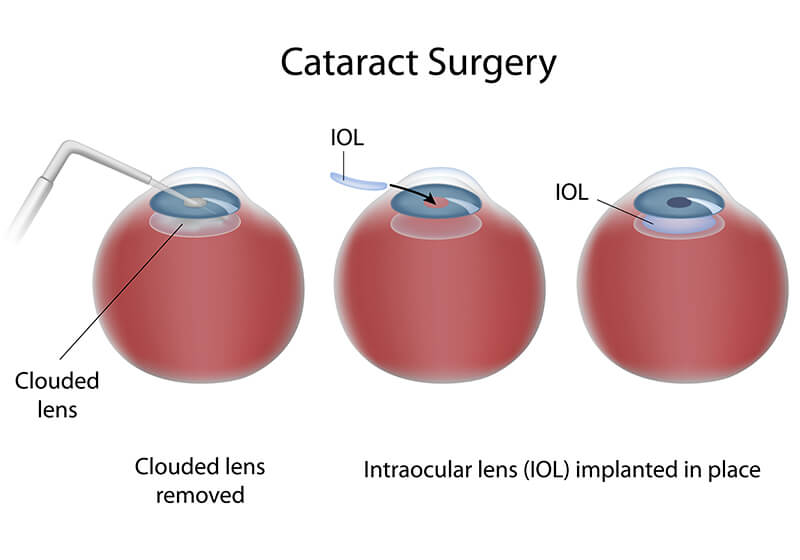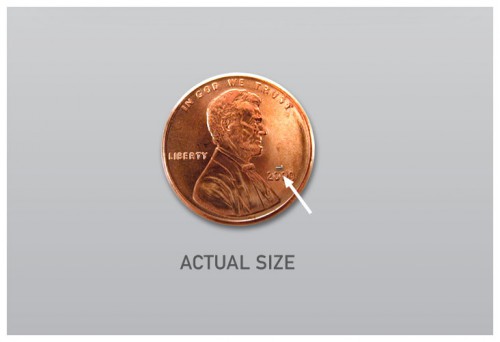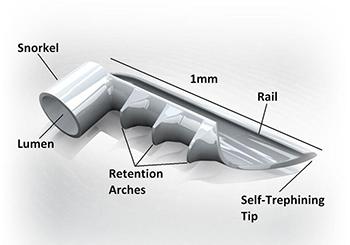We have successfully received your message and will get back to you as soon as possible.
We have successfully received your message and will get back to you as soon as possible.
A cataract develops when the natural lens of the eye becomes cloudy and is mostly due to exposure of the eye to ultraviolet radiation throughout life. Typically, cataracts affect people over the age of 50.
However, a cataract can occur at any age, and can also be inherited (genetic). A congenital cataract occurs when a baby is born with a cataract because of an inherited defect or infection within the womb.
Cataract surgery is performed when eyesight is impaired to the point where the patient has some difficulty doing daily tasks, like driving or reading. In children, it is important that surgery is performed as soon as possible to prevent permanent loss of vision.
It is best to perform the surgery before the cataract is too dense, or this makes the procedure more difficult and lengthy. A special type of ultrasound known as phacoemulsification is used to break up the cataract into smaller pieces that are easily removed from the eye.
The cataract is replaced with an artificial intraocular lens implant made out of silicone or acrylic. The entire cataract and implant procedure is done through a small incision in the outer surface of the eye within minutes, often without the need for sutures.
The patient is given mild intravenous sedation during the surgery and it only takes a few anesthetic drops to numb the eye. The surgery is painless and the eye does not have to be patched after the procedure.
If the other eye has a cataract, then it is prudent to wait several weeks to consider surgery on the second eye. Dr. Harmon Stein and Dr. Judith Lavrich both perform cataract surgery at Total Eye Care.

In addition to the benefit of improved vision, the patient will also be less dependent on their glasses following cataract surgery. The intraocular lens implant is calculated prior to the procedure, therefore reducing the need for a distance vision prescription in the new glasses.
Most postoperative patients rely on their new glasses mostly for near reading vision. For patients with astigmatism (irregular curvature of the corneal surface), the surgeon can correct this at the time of the procedure with a Limbal Relaxing Incision or a Toric intraocular implant lens. Click here to read about our Premium Lens Options for cataract surgery.
Cataract surgery has undergone many advances over the last 20 years. It is a much faster and safer procedure than it was before, and visual recovery is rapid. Most patients see an improvement in their eyesight within a few hours after surgery. Eye drops that reduce inflammation and prevent infection are prescribed to be taken a few times a day for 4-5 weeks postoperatively.
The new, clear artificial lens implant is permanent, and will never turn into a cataract. In about 80% of all patients that have cataract surgery, a simple laser procedure is required if scar tissue film develops behind the lens implant.
The scar tissue (also known as a secondary cataract) can occur almost immediately after the surgery, or months to years later. The buildup of this scar tissue is part of the normal healing response of the eye, and once cleared away with the laser, it will never return.

Many of the steps of cataract surgery that are traditionally performed using handheld instruments can now be completed using the precision of a laser. The Catalys Precision Laser System is the world’s most sophisticated laser cataract surgery system.
Using Catalys, Dr. Stein and Dr. Lavrich can provide you a highly customized, more accurate, and gentle cataract treatment. The video below explains the Laser Cataract Surgery process and outlines the differences between Laser Cataract Surgery and Traditional Cataract Surgery.

Like a fingerprint, every eye has a unique size and shape. Prior to treatment, the CATALYS® Laser images your eye and makes precise 3D maps of relevant structures. This enables Total Eye Care’s surgeons to create a customized treatment plan that matches the uniqueness of each eye.
Our surgeons use CATALYS® to create a circular opening for accessing and removing the cataract. Clinical studies have shown that this opening is approximately 10 times more accurate when performed with CATALYS® than what is achievable by hand.
CATALYS® then softens and breaks up the hard cataract into tiny pieces, allowing for gentler, easier cataract removal. Once the cataract is removed, an intraocular lens is inserted through the same tiny incision and set into position. This replacement lens (IOL) may decrease the need for glasses or bifocals.

For patients with combined cataract and open-angle glaucoma, the iStent is a new micro-invasive procedure that is designed to improve aqueous outflow to safely lower a patient’s intraocular pressure (IOP) and may even help to reduce the burden of medication (at the discretion of your physician).
iStent is the smallest medical device ever approved by the FDA and is placed in your eye during cataract surgery. The iStent is so small that you won’t be able to see or feel it after the procedure is over, but it will be continuously working to help reduce your eye pressure.

Controlling your eye pressure is extremely important to reduce the risk of vision loss due to glaucoma. If you have both cataracts and glaucoma, visit our office to see if the iStent is the right option for you.
New ‘Multi-Focal’ FDA-approved implant lenses are now available that have significantly decreased our patient’s need for reading glasses after cataract surgery.
Many patients relied heavily on reading glasses after cataract removal in the past, but are now enjoying the freedom of being glasses-free. This advanced technology is having an amazing impact on the lifestyle of cataract patients, restoring youthful vision in the ability to see in the distance, up close for reading, and everything in between.
These ‘multifocal’ or ‘accommodating’ implant lenses are designed differently from one another and can be custom selected for your unique needs.
Only after a comprehensive examination and discussion, can you and our surgeons choose the right lenses for your lifestyle. Our patients have enjoyed great success with the Crystalens®, Rezoom™, and ReSTOR® multi-focal implant lenses.
Crystalens® is the first and only ‘accommodating’ intraocular lens. Standard or single vision implant lenses are unable to provide a full range of vision. Using a state-of-the-art hinged design, the Crystalens® is able to flex and change shape which mimics the focusing of the natural lens of the human eye.
For the patient, this means sharper vision across a broad range of distances to reduce or eliminate dependency on glasses. While patients with Crystalens® implants are experiencing increased freedom without the need for glasses, some still use a mild prescription for occasional refinement of their vision for extended periods of reading.
Recent FDA studies to evaluate the success and satisfaction of patients with Crystalens® technology has shown tremendous results. Of the patients with Crystalens® implants, 92% of patients who had Crystalens® implants in both eyes were able to see 20/25 or better at distance without glasses after their procedures.
Over 96% of patients stated they could see at arm’s length, like the computer or dashboard of a car, and 73% could see 20/25 or better at near without glasses or contact lenses.
TRULIGN™ Toric IOL is a premium IOL that can treat not only your cataracts but your astigmatism as well. Like other multi-focal IOL, the TRULIGN is designed to provide you with a broader range of vision and reduce or eliminate the need for glasses after cataract surgery. Custom-selected for your degree of astigmatism, the TRULIGN™ Toric IOL may be the ideal choice to improve your vision.
Other options include the ReZoom™, ReSTOR®, and Tecnis IOLs. Schedule an appointment with one of our doctors to discuss which option is best for you.


 Request an Appointment Back to Top
Request an Appointment Back to Top© 2024 All Rights Reserved. Designed by Glacial Multimedia, Inc. ©
The material contained on this site is for informational purposes only and is not intended to be a substitute for professional medical advice, diagnosis, or treatment.
Always seek the advice of your physician or other qualified health care provider.
Attention Patients: How we are keeping patients safe during COVID-19